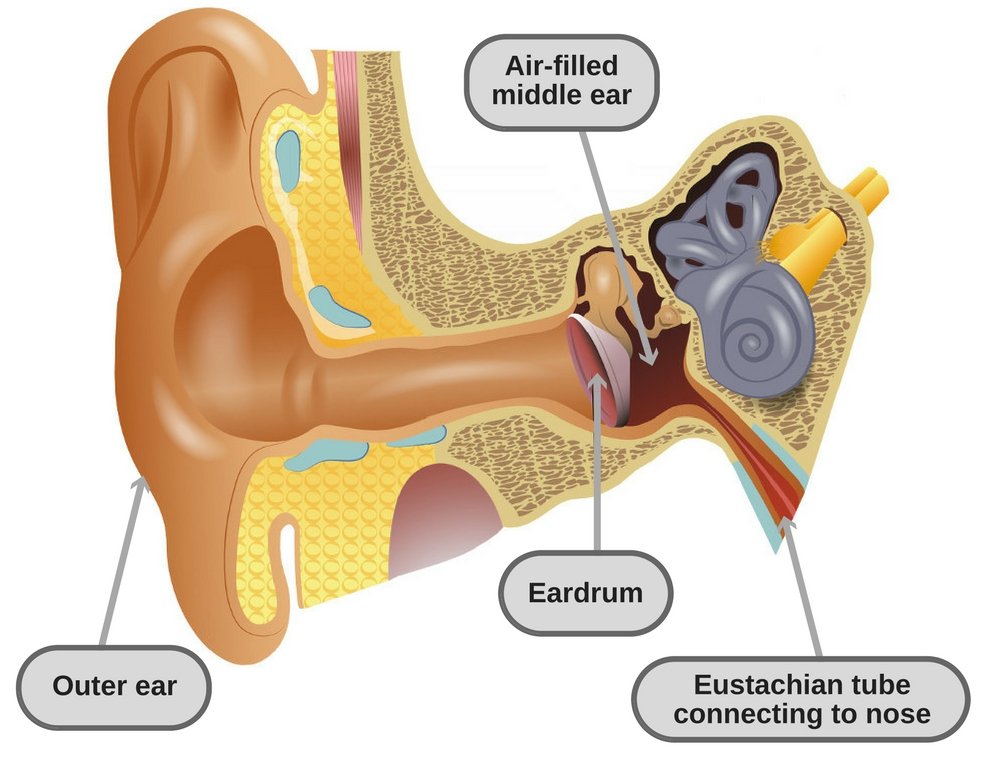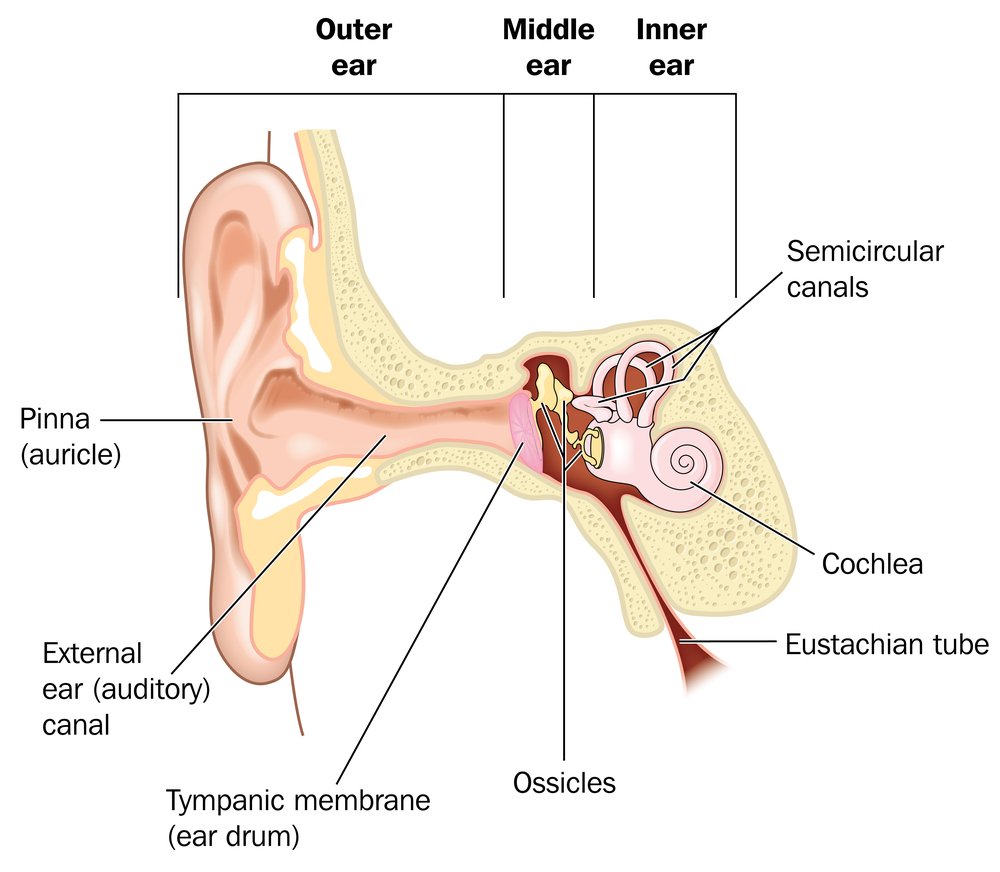Table of Contents (click to expand)
The ear popping or pain one feels when diving deep underwater is caused by the pressure difference between the inside of the ear and the surrounding water. The atmospheric pressure at sea level is 14.7 PSI, while the water pressure at greater depths is much higher. This difference in pressure causes the eardrum, which is a thin sheet of tissue that separates the middle ear from the external ear, to bend inwards. The eardrum is full of nerves that communicate with the brain, and the bending of the eardrum is perceived as pain.
Your ears pop when you dive deep underwater because the (water) pressure at greater depths is higher than the pressure at the surface. Since your ears are used to the atmospheric pressure at sea level (i.e. 14.7 PSI), the eardrum bends inwards due to the pressure difference between the inner ear and the surrounding water. Since the eardrum consists of scores of nerves that communicate to the brain, you perceive this inward bending of the eardrum as pain.
I had heard and read about this ear-aching phenomenon countless times, but never got a chance to experience it first-hand. However, I did experience it a few months ago when I first started to learn swimming. I went into the deep end of the pool and, sure enough, I felt the discomfort in both my ears. A lot of others report the same symptoms; some even observe that their ears “pop” when they go into the deep end of the pool.

So, why does that happen? Why do the depths of a pool (or any deep water body) do that to our ears?
The Eardrum
If you’ve ever stuck your finger inside your ear, you know what the ear canal is. Also known as the external acoustic meatus, it is a passage comprised of skin and bone that leads to the eardrum.
You also probably know about the eardrum; it’s a thin sheet of tissue that separates the middle ear from the external ear. Technically known as the tympanic membrane, it is actually a cone-shaped membrane that vibrates when a sound wave reaches it. Its primary function is to transmit sound from the air to the inside of the middle ear, and then to the fluid-filled cochlea.

The Importance Of Equal Pressure On Both Sides Of The Eardrum
As you can see in the image above, on one side of the eardrum is the ear canal, and on the other side is a hollow space filled with air. You want to keep the pressure on both sides of the eardrum equal, because when that happens, the eardrum remains ‘normal’ and everything works as usual.
In fact, in order to make sure that the pressure on both sides of the eardrum remains equalized, there’s a tube called the Eustachian tube that connects the throat to the middle ear’s air pocket.

Air flows back and forth through this tube, thus ensuring that the pressures on the inside and outside of the eardrum remain equalized.
Also Read: Why Do Your Ears Pop When The Airplane Takes Off?
What Happens When You Go Deep Underwater?
As you go deep underwater, the water pressure increases, because there is the weight of more and more water pushing down on you (note: water pressure always increases with depth, a phenomenon that has a number of practical applications).
As water pressure increases at greater depths, the Eustachian tube becomes clogged. As a result, the middle ear shuts off and becomes a closed chamber. Now, it is holding air at the pressure of 14.7 PSI (pressure at sea level), whereas the water that presses on the ear canal has a higher pressure than 14.7 PSI.
Due to this inequality in pressure at either side of the eardrum, it bows inwards, causing mild to moderate discomfort in the ears.

A simple way to get around this is to equalize the pressure on either side of the eardrum. A simple and popular way to do that is to hold your nose shut with your fingers and try to exhale through your nose. You will hear your ears pop and the pain will quickly subside.
Also Read: Why Do Deep-Sea Fishes Not Get Crushed By Pressure On The Sea Floor?
How well do you understand the article above!

